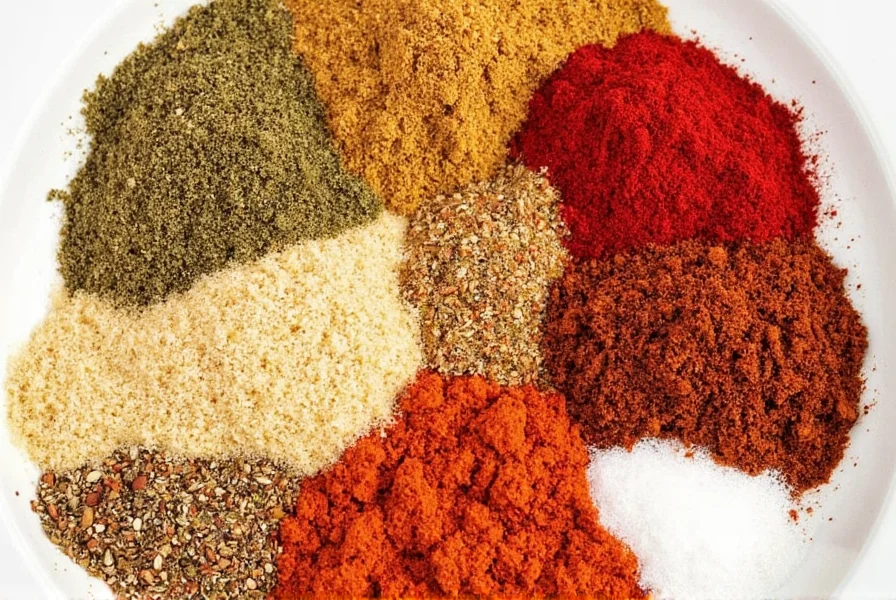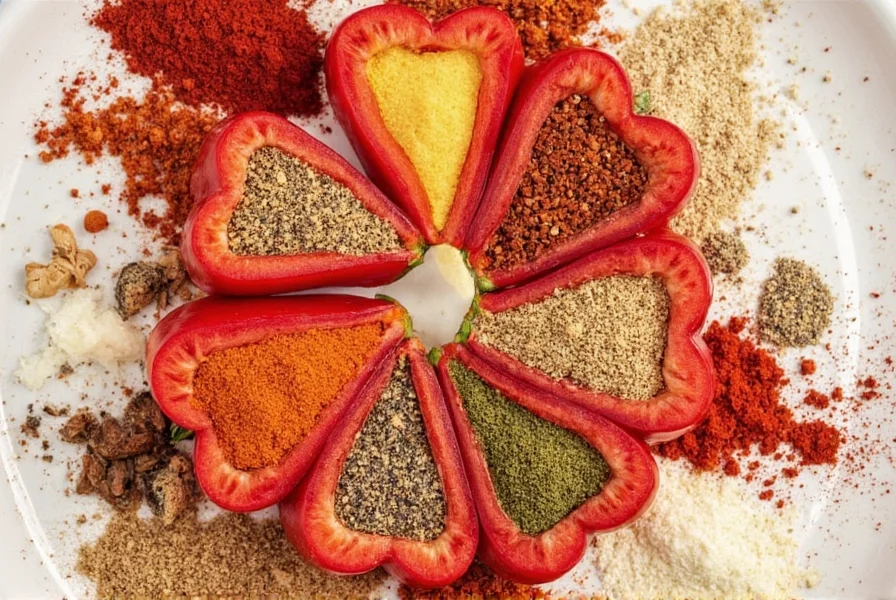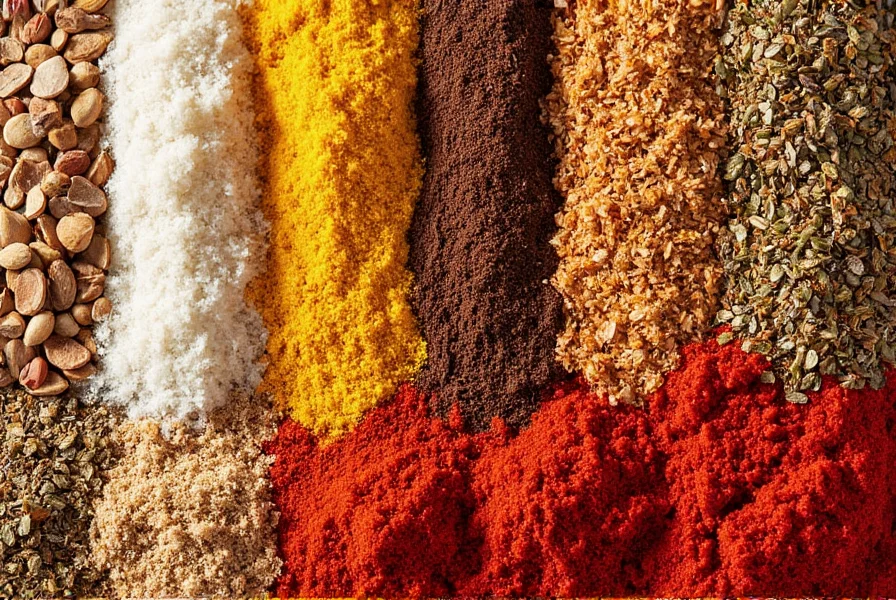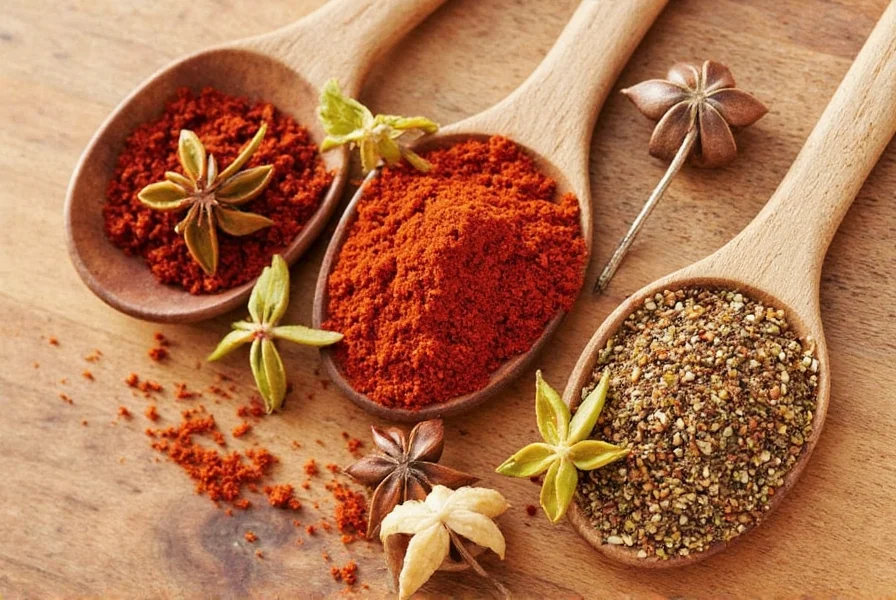Table of Contents
- Introduction: The Foundation of Flavor in Cooking
- The Flavor Basics: What Every Home Chef Should Know
- Building Blocks of Cooking: A Flavor Framework
- Building Your Flavor Toolkit: Essential Ingredients for Every Kitchen
- Pro Tips to Level Up Your Flavor Game
- Frequently Asked Questions About Flavor Elements
- Conclusion: Master Flavor Balance for Exceptional Meals
Introduction: The Foundation of Flavor in Cooking
Cooking is an art built on balancing core flavor elements. These fundamental components—such as heat, acidity, umami, and more—form the backbone of every great dish. Understanding them transforms cooking from following recipes to creating intentional, memorable meals.

This guide explains the seven essential flavor elements that form cooking's building blocks. While spices contribute to these elements, they represent only part of the broader flavor spectrum. Mastering these fundamentals allows you to confidently adjust any dish.
The Flavor Basics: What Every Home Chef Should Know
Before exploring advanced techniques, grasp the core concepts behind flavor creation. These elements work together to create depth and balance in every dish.
What Are Flavor Elements?
Flavor elements are the foundational components that shape a dish's taste profile. Unlike spices (which are specific dried plant ingredients), these elements include broader categories like salt, acid, sweetness, and umami. Each serves a distinct purpose in balancing and enhancing food.
The Core Seven: A Quick Overview
- Heat: Adds intensity and excitement (e.g., chili peppers, black pepper)
- Earthiness: Provides deep, grounding notes (e.g., cumin, mushrooms)
- Sweetness: Balances bitterness and adds richness (e.g., cinnamon, natural sugars)
- Aroma: Creates complexity through scent (e.g., cardamom, fresh herbs)
- Sharpness: Brightens and cuts through richness (e.g., sumac, vinegar)
- Umami: Delivers savory depth (e.g., tomatoes, soy sauce)
- Acidity: Lifts heavy flavors and adds freshness (e.g., lemon, tamarind)
Building Blocks of Cooking: A Flavor Framework
Think of your kitchen as a toolbox where each flavor element serves a specific role. Here's how to build balanced dishes using these core components:
1. Heat – Chili Peppers, Black Pepper, Ginger
Heat adds excitement and complexity. Use sparingly to avoid overwhelming other flavors. Ideal for sauces, rubs, and soups.
2. Earthiness – Cumin, Coriander, Smoked Paprika
These bring depth and richness to meats, legumes, and roasted vegetables. Essential for curries, stews, and chili.
3. Sweetness – Cinnamon, Nutmeg, Honey
Beyond desserts, sweetness balances bitterness in tomato sauces, roasted vegetables, and spice blends.
4. Aroma – Cardamom, Cloves, Fresh Herbs
These enhance fragrance and create layers in complex dishes like braises and baked goods.
5. Sharpness – Sumac, Vinegar, Lemon Juice
Adds brightness to cut through rich or fatty dishes. Perfect for salads, dressings, and finishing touches.
6. Umami – Dried Mushrooms, Soy Sauce, Tomatoes
Umami delivers savory depth without salt. Boosts meaty flavors in soups, sauces, and marinades.
7. Acidity – Lemon Zest, Tamarind, Vinegar
Brings balance to heavy dishes. A squeeze of lemon can transform a bland stew into something vibrant.
| Flavor Element | Flavor Profile | Best For | Pairing Suggestions |
|---|---|---|---|
| Heat (Cayenne) | Hot & Slightly Bitter | Chili, Goulash, Hot Sauces | With lime, garlic, honey |
| Earthiness (Cumin) | Earthy & Nutty | Mexican, Indian, Middle Eastern dishes | Tomatoes, coriander, cilantro |
| Sweetness (Cinnamon) | Sweet & Woody | Desserts, Stews, Chai | Apples, chocolate, cardamom |
| Sharpness (Sumac) | Tangy & Citrusy | Sprinkle on salads, meats, dips | Olive oil, lemon, za'atar |
| Aroma (Cardamom) | Fragrant & Floral | Indian desserts, chai, baked goods | Rose water, pistachio, orange zest |
Building Your Flavor Toolkit: Essential Ingredients for Every Kitchen
Not all ingredients are created equal. Learn how to select and store foundational flavor components for maximum impact.
Whole vs. Ground: Which Is Better?
Whole ingredients retain potency longer. Grind or crush them fresh for peak flavor.
- Whole Ingredients: Peppercorns, cumin seeds, mustard seeds
- Ground Ingredients: Paprika, turmeric, cinnamon
Storage Tips
- Store in airtight containers away from heat and light
- Label everything clearly
- Replace ground ingredients every 1-2 years; whole ingredients every 2-3 years
Top 7 Must-Have Ingredients to Start With
- Sea Salt: Enhances all other flavors and balances bitterness
- Apple Cider Vinegar: Provides acidity for dressings and marinades
- Smoked Paprika: Adds depth and smoky richness
- Tomato Paste: A concentrated umami source for sauces
- Lemon Juice: Essential for balancing richness and adding brightness
- Ground Cumin: Versatile for Mexican, Indian, and Middle Eastern dishes
- Cinnamon: Works in both sweet and savory applications
Brand Recommendations
Focus on quality ingredients that deliver consistent flavor:
| Brand | Features | Best For | Price Range |
|---|---|---|---|
| McCormick | Widely available, consistent quality | Everyday cooking | $ |
| Penzeys | High-quality, bold flavors | Home chefs seeking premium ingredients | $$ |
| Spice Islands | Natural, whole ingredients | Organic enthusiasts | $$ |
| Prasadam Organics | Single-origin, organic ingredients | Global cuisine lovers | $$$ |

Pro Tips to Level Up Your Flavor Game
- Toasting Ingredients: Dry toast cumin, coriander, or mustard seeds to unlock intense aromas
- Layering Flavors: Add robust elements early for depth; delicate ones at the end for freshness
- Balance with Acid: If a dish feels too heavy, a squeeze of lemon or vinegar can lift it beautifully
- Experiment with Combinations: Try pairing unexpected elements like cinnamon with savory dishes
- Use Fresh Ingredients: Fresh garlic, lemon juice, and herbs always outperform processed alternatives

Frequently Asked Questions About Flavor Elements
What are the 7 essential flavor elements for cooking?
The seven essential flavor elements are: 1) Heat (from chili peppers), 2) Earthiness (from cumin, mushrooms), 3) Sweetness (from cinnamon, natural sugars), 4) Aroma (from cardamom, herbs), 5) Sharpness (from sumac, vinegar), 6) Umami (from tomatoes, soy sauce), and 7) Acidity (from lemon, tamarind). Mastering these creates balanced, complex dishes.
How can I tell if my ingredients have lost potency?
Ingredients don't spoil but lose potency over time. Whole ingredients last 2-3 years; ground ingredients 1-2 years. Test by rubbing a small amount between your fingers—if the aroma is weak or barely noticeable, replace it. Good ingredients should have vibrant color and strong scent.
What's the difference between flavor elements and just using recipes?
Understanding flavor elements gives you the knowledge to adjust recipes confidently rather than following instructions blindly. When you know how each element works, you can fix bland, salty, or unbalanced dishes. It's the difference between being a recipe follower and becoming a true cook who creates based on principles.
Can I substitute one flavor element for another?
Yes, but match the element type. For heat, substitute cayenne with red pepper flakes. For acidity, use vinegar instead of lemon. Start with half the amount and adjust to taste—potency varies. Avoid substituting across categories (e.g., don't replace umami with sweetness).
When should I add flavor elements during cooking?
Timing matters! Add robust elements like cumin, garlic, and tomatoes early for deep integration. Add delicate elements like fresh herbs, vinegar, and lemon juice at the end to preserve brightness. Toast whole seeds before grinding for maximum flavor.
How many flavor elements should I use in one dish?
Most successful dishes balance 3-5 elements. Too few creates flatness; too many causes confusion. For example, a curry might include earthiness (cumin), heat (chili), sweetness (cinnamon), aroma (cardamom), and umami (tomatoes). Start simple and build complexity as you gain confidence.
Conclusion: Master Flavor Balance for Exceptional Meals
Flavor elements are the true building blocks of cooking—not just spices. By understanding and balancing heat, acidity, umami, and other core components, you unlock endless culinary possibilities. From everyday meals to special occasions, mastering these fundamentals turns cooking into an art form.

Next time you cook, remember: you're not just adding ingredients—you're crafting a sensory experience. Experiment, taste, and enjoy the journey to becoming a true flavor master.











 浙公网安备
33010002000092号
浙公网安备
33010002000092号 浙B2-20120091-4
浙B2-20120091-4